Build a Bond Ladder for More Income
Our four portfolios will help you harness higher interest rates.


It's a sure bet that interest rates have settled into a higher range and are poised to rise further. But don't let that scare you away from bonds (when rates are rising, bond prices tend to fall, and vice versa) or from certificates of deposit. If anything, the volatile stock market should be nudging you toward more bonds and CDs, not fewer.
Still, the rate outlook demands some caution in your fixed-income strategy. The market value of long-term Treasuries and other bonds is apt to shrink more, especially if inflation rises enough to shock bond traders into demanding higher yields on new investments.
But it's worth remembering that when a bond matures, the issuer returns the entire face amount. So a bond whose price falls to 95 cents on the dollar will eventually pay you back 100 cents, unless the borrower defaults or you sell in the interim. Income-seeking investors can stick to a simple plan to protect bond principal from getting nicked by rising rates, while collecting a decent income and reinvesting returned capital for a higher yield as rates continue to climb. You can accomplish this with an old-school technique called laddering. It works well with certificates of deposit and with individual bonds.
From just $107.88 $24.99 for Kiplinger Personal Finance
Become a smarter, better informed investor. Subscribe from just $107.88 $24.99, plus get up to 4 Special Issues

Sign up for Kiplinger’s Free Newsletters
Profit and prosper with the best of expert advice on investing, taxes, retirement, personal finance and more - straight to your e-mail.
Profit and prosper with the best of expert advice - straight to your e-mail.
Bond funds don't work for ladders because the bonds in them are rarely held to maturity. But some exchange-traded funds have found a work-around, holding portfolios of bonds that all mature in a target year, and such ETFs can be a low-cost way to build a laddered income stream.
The analogy to a ladder is straightforward. You own a series of bonds that represent the rungs, with the bottom ones paying the lowest interest rates and maturing soonest, and the yields and terms climbing as you go higher. Recently, a six-month Treasury bill paid 1.96%, a one-year note paid 2.08%, a two-year issue paid 2.31% and so on, until you hit 2.85% for a 10-year bond and 3.08% for a 30-year. (Rates and prices are as of March 16.)
A survey of corporate bonds rated A to AAA shows coupon rates starting at 1.97% for six months and rising to 2.12% for one year, 2.38% for two, 2.88% for five and then to 3.54% for 10 years and 4.11% for 30.
An ideal government-bond ladder might start at six months and step up to a one-year note, then one rung at a time to seven-year T-notes, each yielding a little more than the previous one. If you invest the same amount at each maturity, the average yield currently is 2.35%. That's reasonable, considering you get the full faith and credit of the U.S. Treasury. When the six-month bill matures, simply buy a new one. As the note on the next-lowest rung on the ladder matures each year, reinvest the proceeds in the longest maturity on the ladder, in this case a seven-year note. (With other bonds, yields on the ladder might not always rise rung-by-rung, but in a rising-rate environment, you will be replacing maturing bonds with higher-yielding ones.)
How much you'll need. The amount of money you need to build a ladder of individual bonds varies. Treasury Direct (www.treasurydirect.gov) fills orders as small as $100. Consider any dollar amount in government bonds safe, in the sense that there's virtually no risk of default.
With corporates and municipals, advisers typically recommend that you invest at least $100,000 to adequately diversify and protect against defaults or bond downgrades from rating agencies that weigh in on companies' creditworthiness. But most tax-exempt issuers and investment-grade corporate borrowers are healthy and as likely to win higher credit ratings as to be downgraded to so-called junk status. So $50,000 to set up a 10-rung muni or corporate ladder is probably enough. Even $25,000 may be adequate if a broker fills small-enough orders across a wide spectrum of issuers.
Assemble a CD ladder by splitting your money among certificates with one- to five-year terms, rolling the one that matures each year into a new five-year CD. Nationwide, current rates range from 0.75% on a one-year CD to 1.69% on a five-year. Bank or credit union CDs are insured, up to $250,000 per depositor, at each institution.
For a bond ladder, consider the following portfolios as a guide. You may not be able to replicate them exactly, but you should be able to get close.
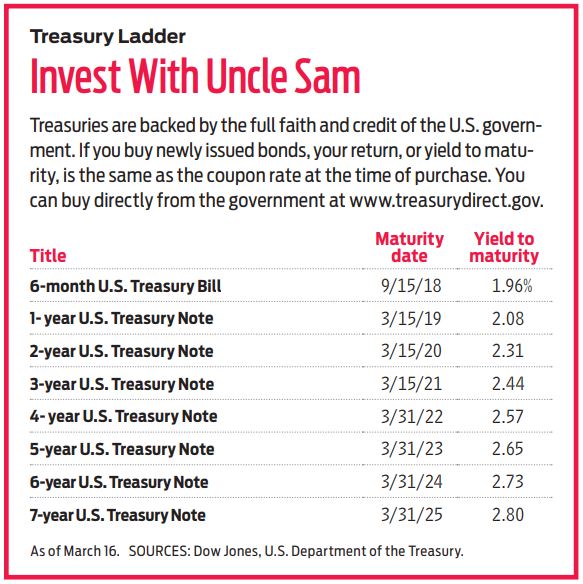
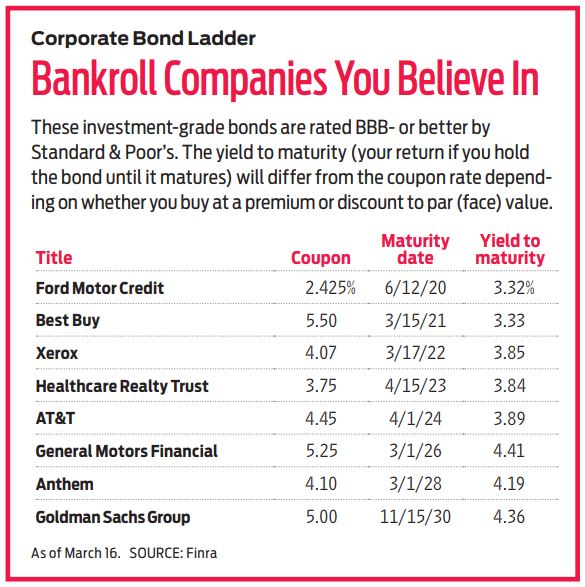
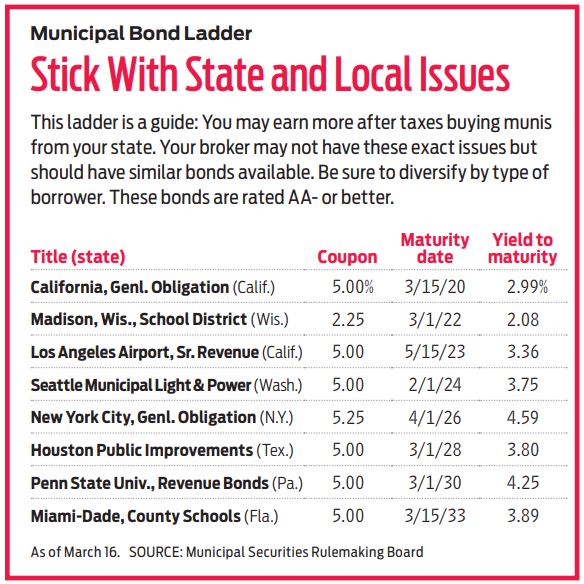
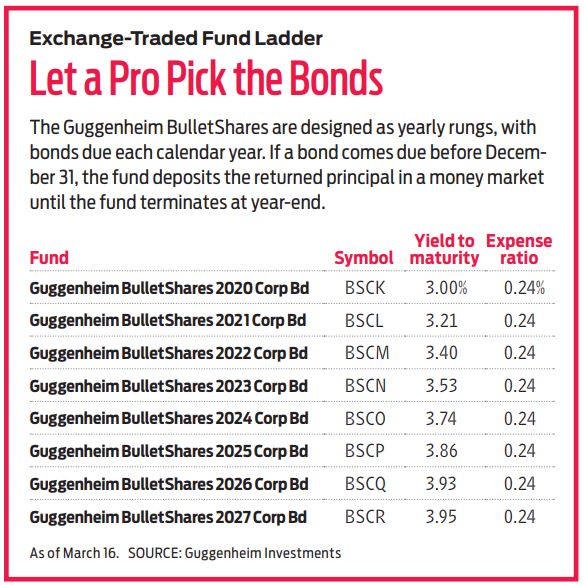
Profit and prosper with the best of Kiplinger's advice on investing, taxes, retirement, personal finance and much more. Delivered daily. Enter your email in the box and click Sign Me Up.

Kosnett is the editor of Kiplinger Investing for Income and writes the "Cash in Hand" column for Kiplinger Personal Finance. He is an income-investing expert who covers bonds, real estate investment trusts, oil and gas income deals, dividend stocks and anything else that pays interest and dividends. He joined Kiplinger in 1981 after six years in newspapers, including the Baltimore Sun. He is a 1976 journalism graduate from the Medill School at Northwestern University and completed an executive program at the Carnegie-Mellon University business school in 1978.
-
 How to Plan a Microvacation That Actually Feels Restful
How to Plan a Microvacation That Actually Feels RestfulHow a simple long weekend can boost your mood, reduce stress and make winter feel shorter.
-
 We're retired and fight more than ever. Should we take a break?
We're retired and fight more than ever. Should we take a break?Can taking a break save a marriage? We asked professional relationship therapists for advice.
-
 Turning 59½: 5 Planning Moves Most Pre-Retirees Overlook
Turning 59½: 5 Planning Moves Most Pre-Retirees OverlookAge 59½ isn't just when you can access your retirement savings tax-free. It also signals the start of retirement planning opportunities you shouldn't miss.
-
 The Most Tax-Friendly States for Investing in 2025 (Hint: There Are Two)
The Most Tax-Friendly States for Investing in 2025 (Hint: There Are Two)State Taxes Living in one of these places could lower your 2025 investment taxes — especially if you invest in real estate.
-
 The Final Countdown for Retirees with Investment Income
The Final Countdown for Retirees with Investment IncomeRetirement Tax Don’t assume Social Security withholding is enough. Some retirement income may require a quarterly estimated tax payment by the September 15 deadline.
-
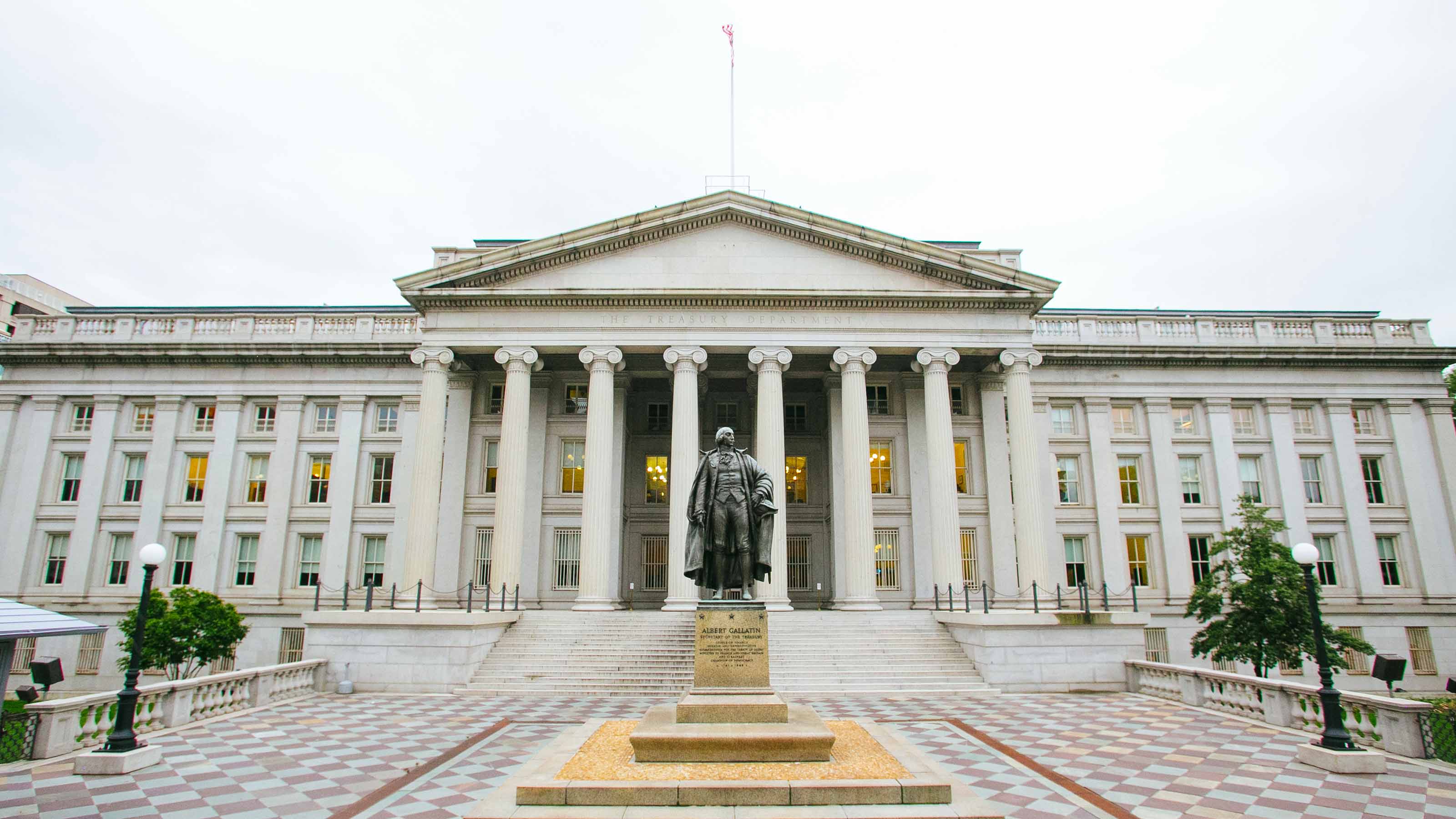 Why Investors Needn't Worry About U.S. Credit Downgrade
Why Investors Needn't Worry About U.S. Credit DowngradeFitch Ratings The United States saw its credit rating downgraded for just the second time in history, but experts aren't worried about the long-term damage to stocks.
-
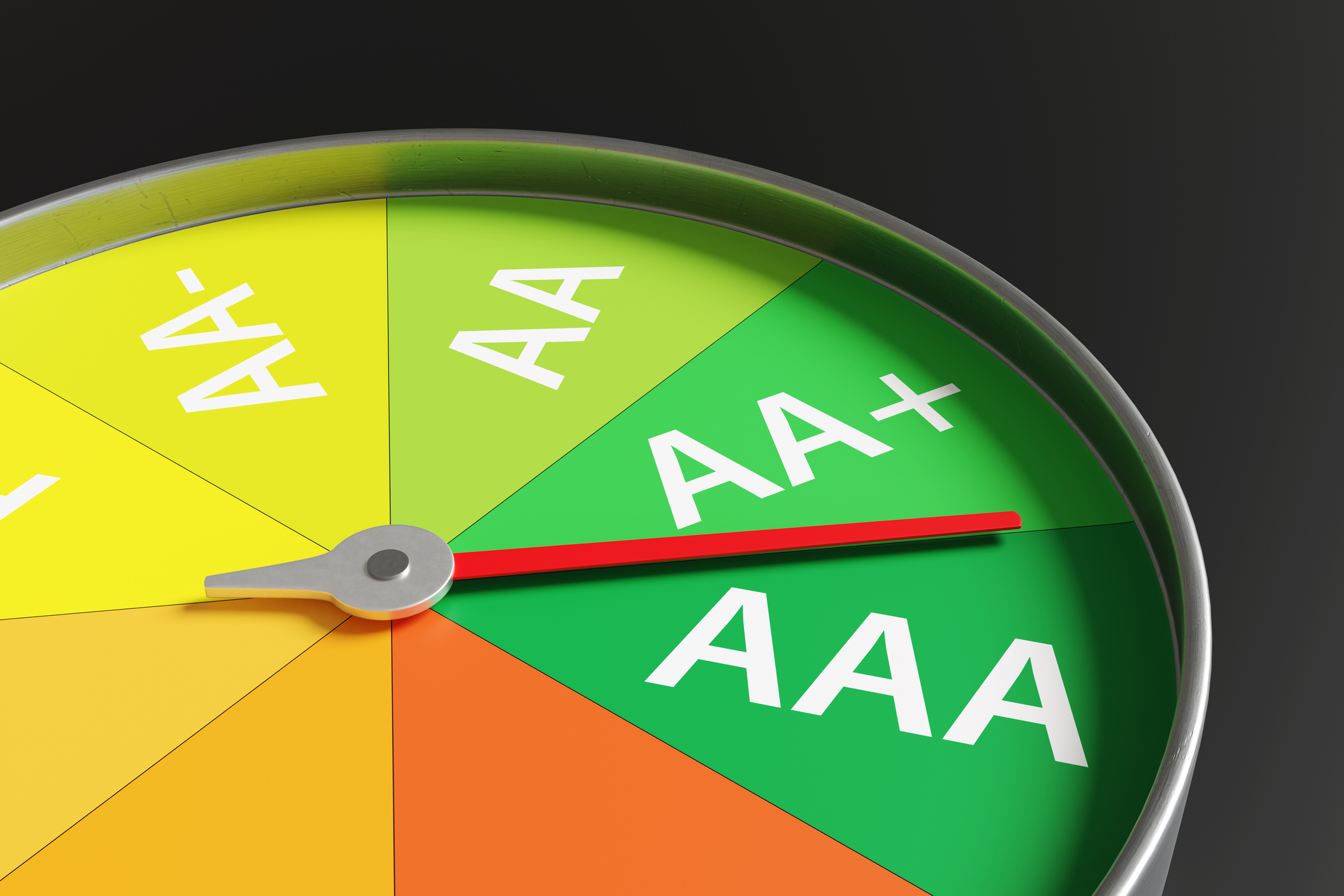 Bond Ratings and What They Mean
Bond Ratings and What They Meaninvesting Bond ratings measure the creditworthiness of your bond issuer. Understanding bond ratings can help you limit your risk and maximize your yield.
-
 Bond Basics: Treasuries
Bond Basics: Treasuriesinvesting Understand the different types of U.S. treasuries and how they work.
-
 Bond Basics: Ownership
Bond Basics: Ownershipinvesting Bonds come in a variety of forms, but they all share these basic traits.
-
 Bond Basics: Pick Your Type
Bond Basics: Pick Your Typeinvesting Bonds offer a variety of ways to grow wealth and fortify your portfolio. Learn about the types of bonds and how they work.
-
 Silicon Valley Bank, Signature Bank Failures Send Bank Stocks Reeling
Silicon Valley Bank, Signature Bank Failures Send Bank Stocks ReelingFinancial stocks continued to sell off following the collapse of regional lenders SVB and Signature Bank.